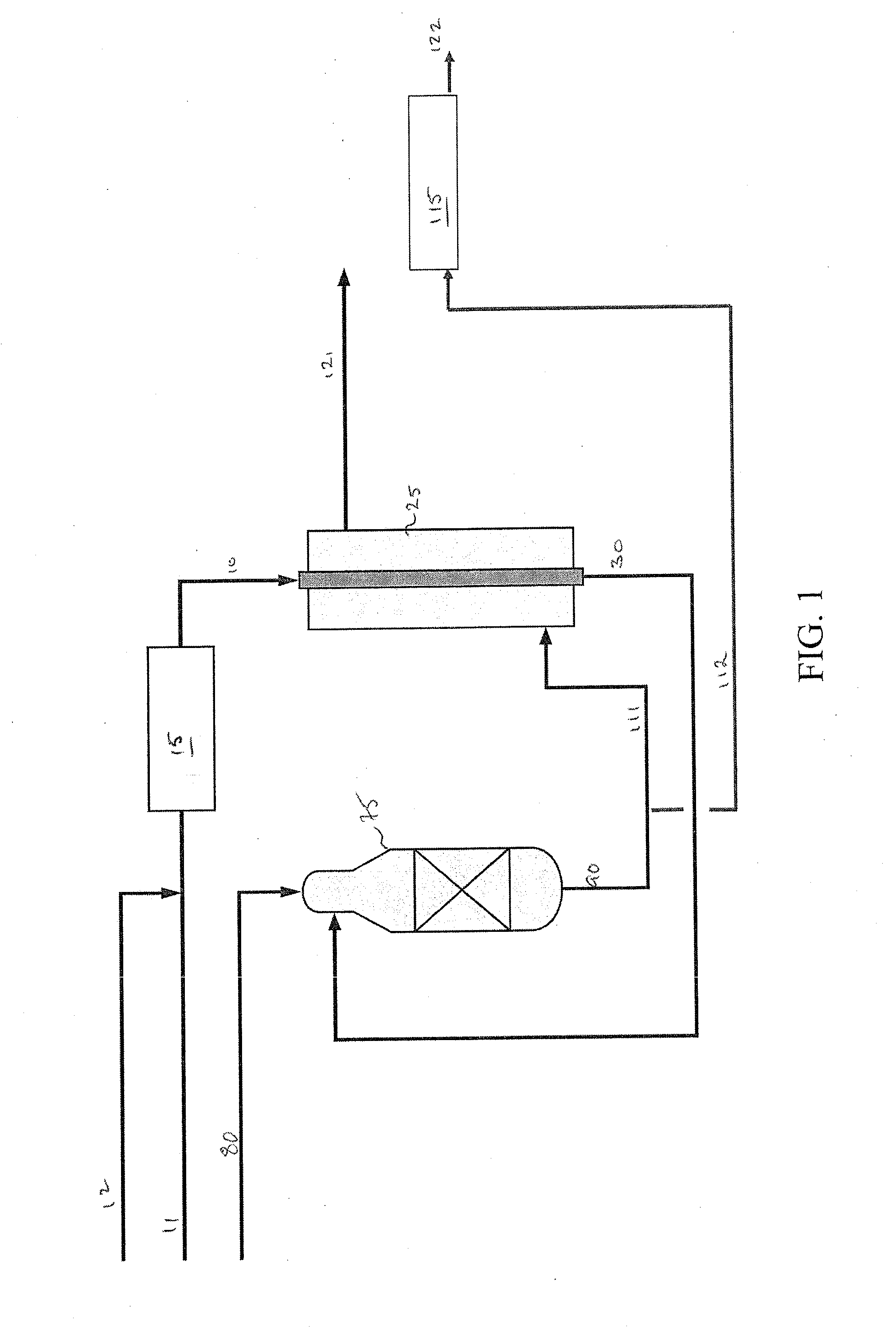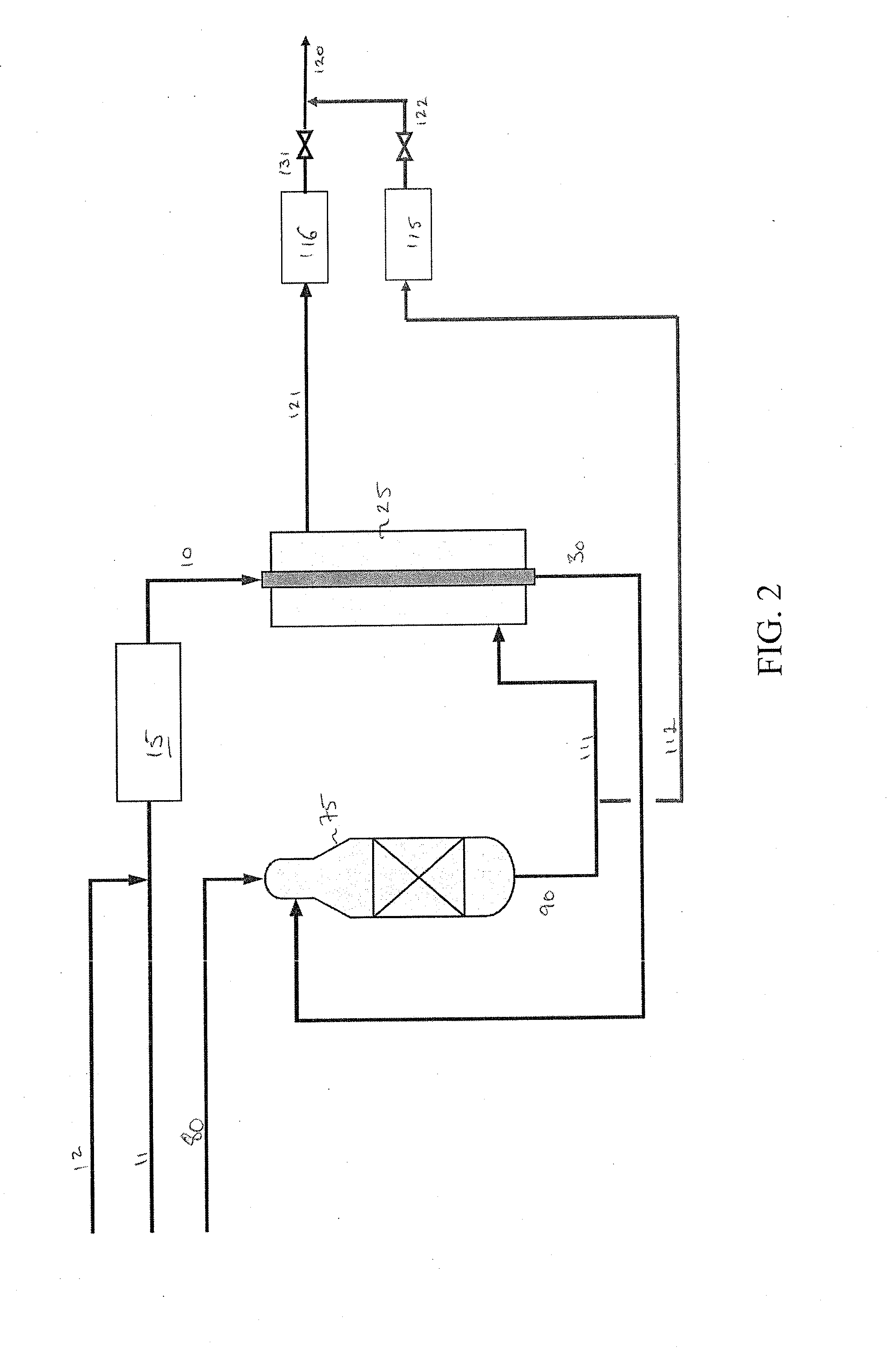Process for reforming hydrocarbons
a hydrocarbon and process technology, applied in the field of hydrocarbon process and plant for gas production, can solve the problems of increasing the cost of capital equipment, prohibitively large capital cost, and reducing the efficiency of the total plant, so as to reduce the potential for i.a., reduce the flow of the stream on the shell side, and increase the heat transfer area of the heat exchange reformer.
- Summary
- Abstract
- Description
- Claims
- Application Information
AI Technical Summary
Benefits of technology
Problems solved by technology
Method used
Image
Examples
Embodiment Construction
[0102]In FIG. 1, a hydrocarbon feedstock 10 is formed in a pre-reformer 15 from a hydrocarbon stream 11 and steam 12. The hydrocarbon feedstock 10 is passed to the heat-exchange reformer 25 where it is catalytically steam reformed and thereafter leaves the heat-exchange reformer as stream 30. The primary reformed gas 30 is fed to an autothermal reformer 75 to which oxidant 80 is also supplied. The primary reformed gas is partially combusted and brought towards equilibrium over reforming catalyst in the autothermal reformer 75. The hot effluent synthesis gas 90 from the autothermal reformer 75 is split into first 111 and second 112 synthesis gas streams. Heat is recovered from the first synthesis gas stream 111 by passing it to the heat exchange reformer 25. This first synthesis gas stream 111 is cooled by heat exchange with the gas undergoing reforming over the catalyst in the heat-exchange reformer 25. The thus cooled first synthesis gas stream 111 leaves the heat exchange reformer...
PUM
| Property | Measurement | Unit |
|---|---|---|
| Fraction | aaaaa | aaaaa |
| Fraction | aaaaa | aaaaa |
| Fraction | aaaaa | aaaaa |
Abstract
Description
Claims
Application Information
 Login to View More
Login to View More - R&D
- Intellectual Property
- Life Sciences
- Materials
- Tech Scout
- Unparalleled Data Quality
- Higher Quality Content
- 60% Fewer Hallucinations
Browse by: Latest US Patents, China's latest patents, Technical Efficacy Thesaurus, Application Domain, Technology Topic, Popular Technical Reports.
© 2025 PatSnap. All rights reserved.Legal|Privacy policy|Modern Slavery Act Transparency Statement|Sitemap|About US| Contact US: help@patsnap.com



